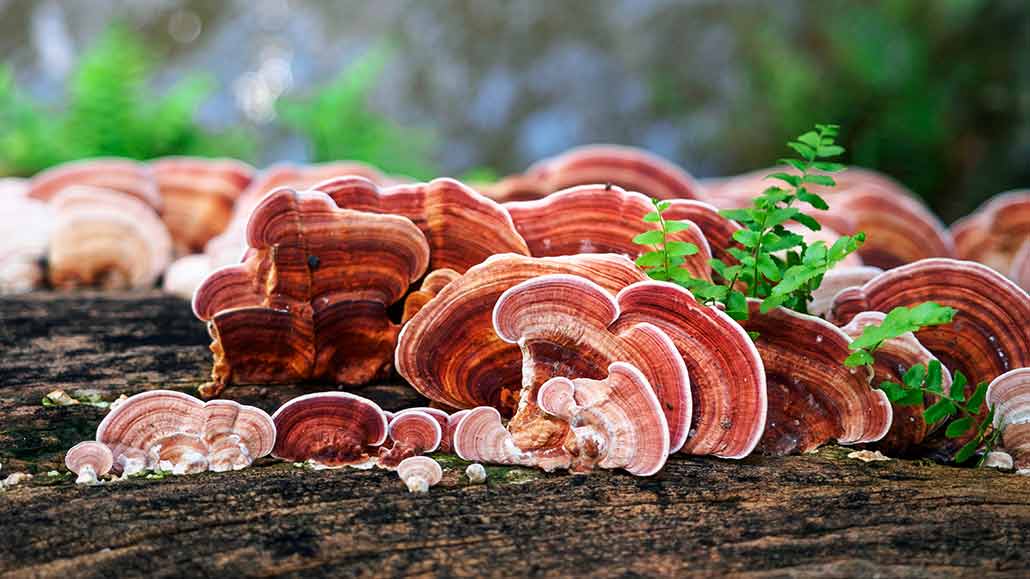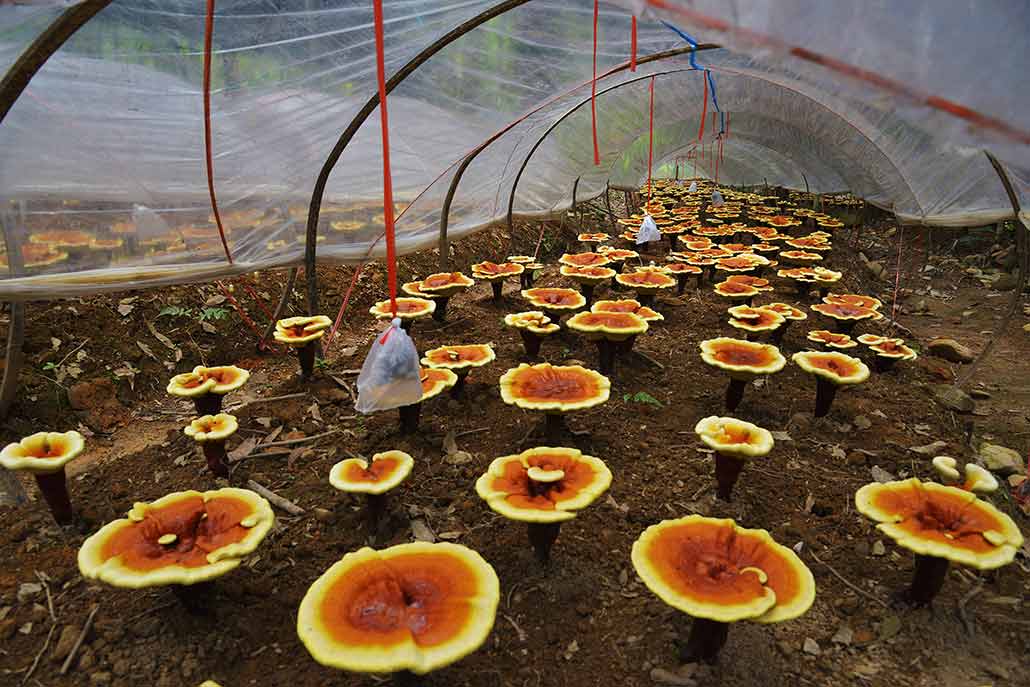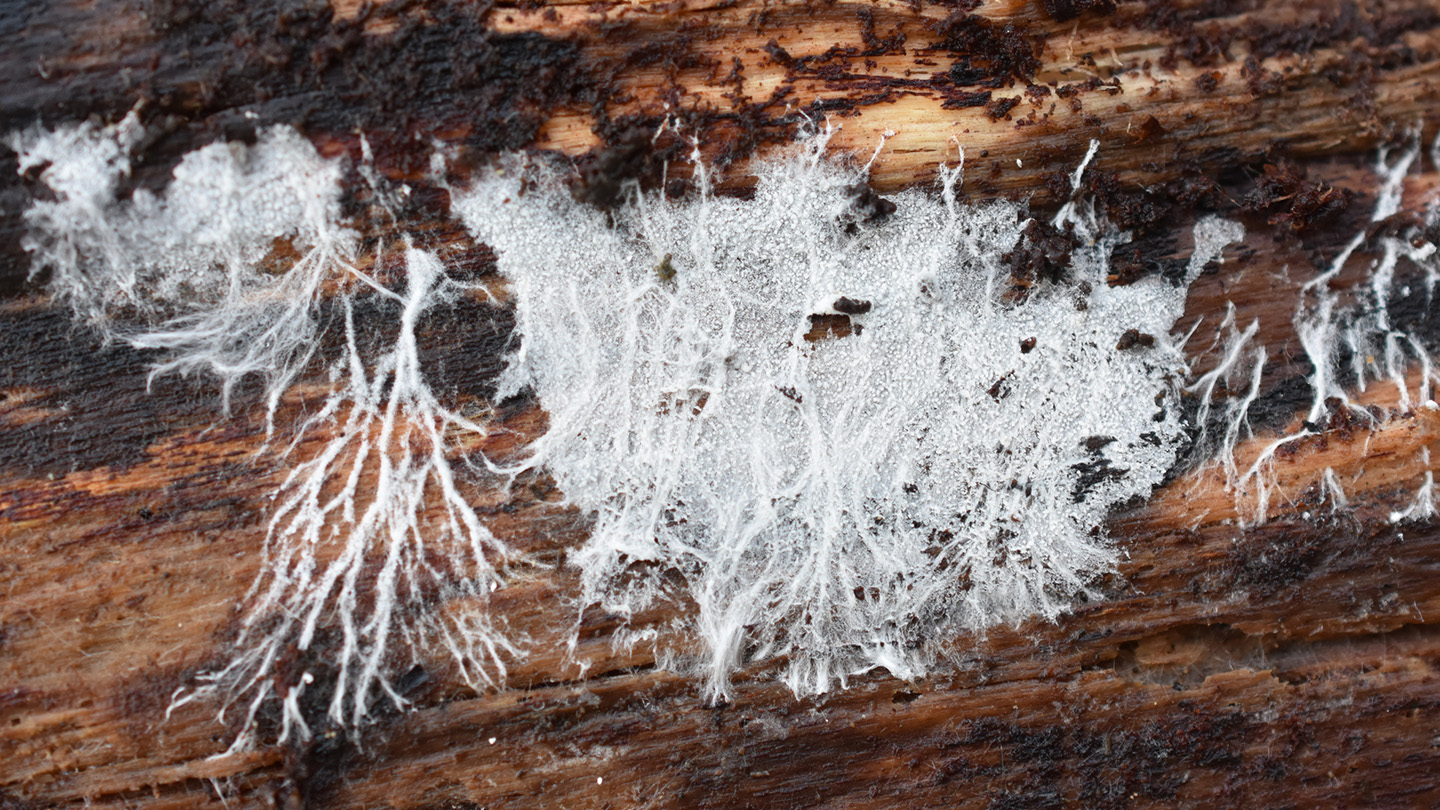Made from fungi, this vegan leather can self-heal holes or rips
Its dormant spores can regrow — and repair — damaged areas

A new type of self-healing leather has been made by processing the rootlike mycelium of this fungal species, native to Asia. In the wild, it can be found growing on wood stumps and fallen trees.
Sritakoset/iStock/Getty Images Plus
By Jude Coleman
Leather fabrics can be pricey — so a rip in a favorite jacket or purse might be upsetting. But what if torn leather could repair itself? That can’t happen today. But it might one day — if that jacket is fashioned from a specially prepared fungus.
Scientists shared their recipe for this novel leather in the April 11 issue of Advanced Functional Materials.
Most leather comes from animal hides. But researchers in Newcastle upon Tyne, England, have just fashioned theirs from mycelium (My-SEE-lee-um). It’s the interwoven, thready rootlike structures — hyphae (HI-fee) — made by mushrooms. Normally, these strands spread underground, below a mushroom. There, they absorb nutrients from the dead things the fungus digests, such as logs.
Fungal leather is hardly new. Some companies already use fungi to make leather purses and car seats. These help to satisfy a market for goods made without animal products. But those vegan leathers have always been made in a way that stops the fungus from ever growing again.
The Newcastle team thought it could help those mushroom “roots” retain their ability to regrow by tweaking how they made the leather. And it worked.

It takes a gentle approach
Other producers of fungal leather have kept their methods a secret. The Newcastle team is not doing that. In fact, it has offered a how-to guide for copying its innovation, notes Valeria La Saponara. She’s a mechanical and aerospace engineer at the University of California, Davis. Those instructions, she says, could inspire other scientists who want to make mushroom materials.
Elise Elsacker is a bioengineer who led the work in Newcastle at the Hub for Biotechnology in the Built Environment. (She now works at the Free University of Brussels, in Belgium.) Her team worked with an Asian mushroom. Called Ganoderma lucidum, it’s thought to have medicinal properties. The researchers incubated this mushroom’s mycelia in a soup of nutrients. These included proteins and carbohydrates.
Over time, a skin formed on the surface of that broth. The researchers scooped it off. To keep this “skin” flexible, they added a slippery liquid called glycerol (GLIH-ser-awl). Then they cleaned and dried the leather at 40° Celsius (104° Fahrenheit). Thinner than a dime, it was so fragile that it tore easily.
But the temperatures and chemicals used to make the leather had been so mild that one part of the mycelium remained functional. These were little nodule-shaped bits called chlamydospores (Klah-MID-oh-sporrs). When conditions are prime, they can spring to life and grow more threads.

The researchers then figured out how to get those dormant spores in the leather to grow. All it took was soaking them in the same broth used to initially produce the leather.
To test how well the revived spores work, they punched holes in the leather. Over time, new mycelia grew over the broth-soaked holes. Once healed, the regrown areas were as strong as the undamaged areas. The repairs were visible, but only from the side of the leather that had been in contact with the broth.
What’s next?
It’s possible this method could be used to make a specialty leather for sale in the next decade, says Martyn Dade-Robertson. He’s a coauthor of the study. He also codirects the Hub for Biotechnology in the Built Environment.
But first, the team needs to make its leather stronger. Thickening it will help. The group still isn’t sure what (perhaps moisture) might trigger the spores to sprout without being asked. So the researchers need to figure out how to control when those spores grow. Otherwise, Dade-Robertson points out, someone could “walk out in the rain, and then all of a sudden find that [their] jacket is growing,” he says. “Or perhaps [has] mushrooms popping out of it.”
This is one in a series presenting news on technology and innovation, made possible with generous support from the Lemelson Foundation.







